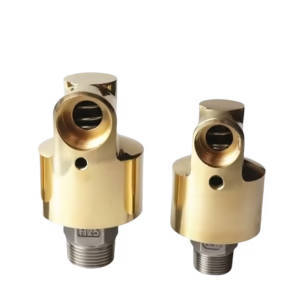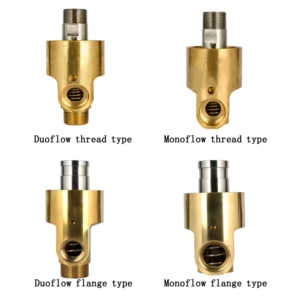Showing all 6 resultsSorted by price: high to low
-
Sale!

$50.00 Original price was: $50.00.$42.00Current price is: $42.00.
Water Cooling Rotary Union: Product Details The Water Cooling Rotary Union is an essential component designed to facilitate the efficient transfer of cooling water in various industrial applications. Engineered for high performance and reliability, this rotary union ensures optimal fluid dynamics while preventing leaks, making it ideal for use in manufacturing processes, CNC machines, and…
-
Sale!

$50.00 Original price was: $50.00.$40.00Current price is: $40.00.
- Size:1/4″ – 4″
- Max. speed:3000r/min
- Max. Temperature:80℃/120℃
- Max. Pressure:1.6Mpa
- Connections:Thread
- Standard:METRIC,NPT,BSPT
- Applicable medium:coolant water/hot water/cold oil/air
- Hosing material:brass
-
Sale!


$30.00 Original price was: $30.00.$26.00Current price is: $26.00.
- Product name: Water rotary joints
- Material: Stainless Steel Brass
- Pipe Clamp Size: 10/15</li><li><strong>Max.Speed: 1000RPM
- Max. Pressure: 1.6MPa
- Max.Temperature: 100℃
- Applicable Medium: Water, Water heating
-
Sale!

$20.00 Original price was: $20.00.$15.00Current price is: $15.00.
- Connection:Coupling, Fixed Internal Pipe
- Product name: New Compact Water Cooling Rotary Union
- Max temperature: -20°-200°
- Media: Water
- Speed: 0-1000R/min
- Pressure: 1MPa
- Application: Iron industry , big machine
- Connection thread sizes: metric imperial,1.2 American-made 3 minus 1, 1.5, 2,2.5, 3 inches
- Size: 3/4″
- Thread: BS 2779:1986
- Usage: Convey Water
-
Sale!

$20.00 Original price was: $20.00.$15.00Current price is: $15.00.
- &amp;amp;amp;lt;strong>Media Types: Cooling Water, Gas
- Max Pressure:</strong> Up to 28 bar (406 psi)
- Max Temperature: Up to 300°C (572°F)
- Connection Type: Flanged or threaded
- Max Speed: Up to 150 RPM
-
Sale!


$15.00 Original price was: $15.00.$13.00Current price is: $13.00.
- Media Types: Cooling Water, Gas
- Max Pressure: Up to 28 bar (406 psi)
- Max Temperature: Up to 300°C (572°F)
- Connection Type: Flanged or threaded
- Max Speed: Up to 150 RPM








